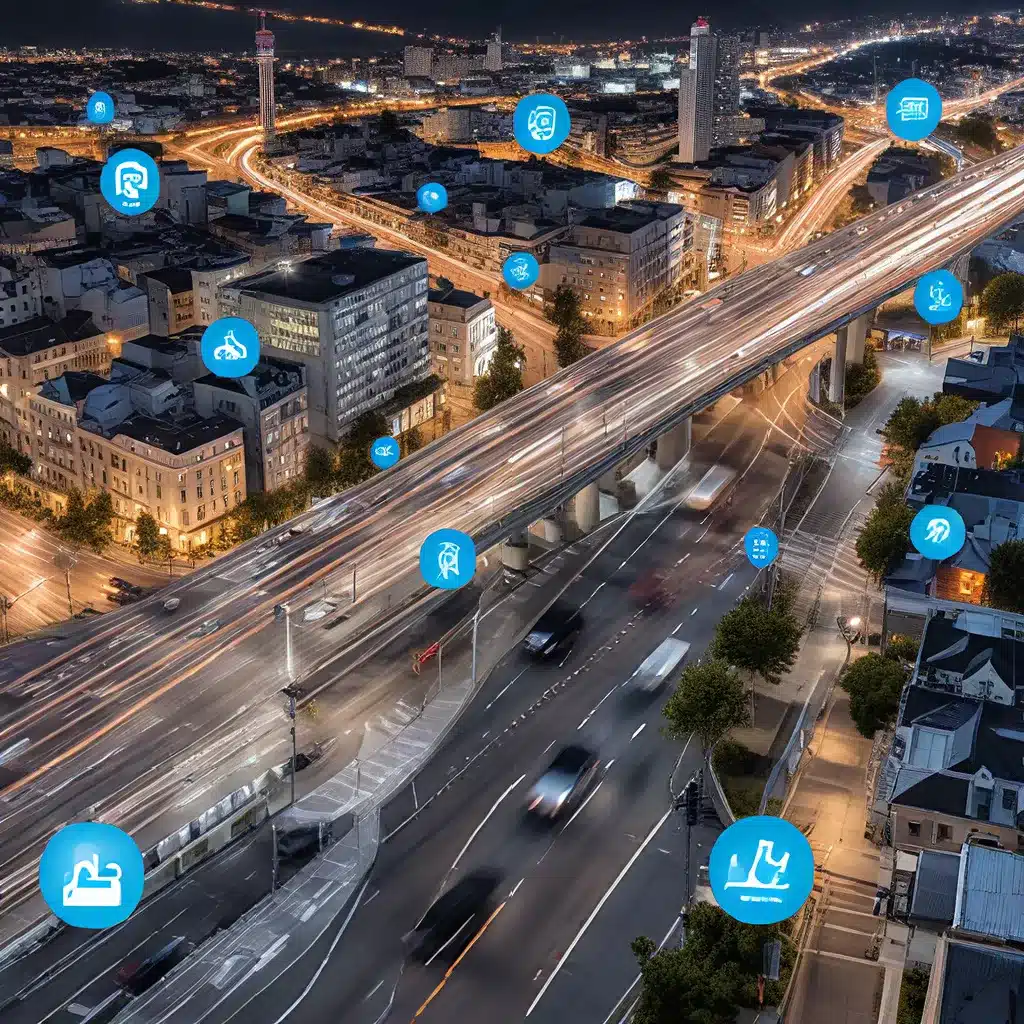
In the rapidly evolving landscape of the Internet of Things (IoT), sensor networks have emerged as the backbone, enabling a multitude of data-driven applications that are reshaping industries and transforming our daily lives. From smart cities and connected homes to industrial automation and precision agriculture, the proliferation of sensor technologies has unlocked unprecedented levels of efficiency, optimization, and real-time decision-making. However, as the reliance on these interconnected systems continues to grow, the importance of balancing efficiency and security in IoT sensor network design has become paramount.
Optimizing Sensor Network Topologies for Efficiency
The design of sensor network topologies plays a crucial role in determining the overall efficiency and performance of IoT systems. Centralized architectures, where all sensor nodes communicate directly with a central hub or gateway, offer streamlined data processing and control, but can be vulnerable to single points of failure. Conversely, decentralized or mesh network topologies, where nodes can communicate directly with each other, provide improved resilience and redundancy, but may introduce challenges in data aggregation and network management.
Recent research has explored innovative approaches to optimizing sensor network topologies, such as hierarchical architectures that combine the strengths of centralized and decentralized models. These hybrid designs often feature edge computing capabilities, where sensor nodes can perform local data processing and decision-making, reducing the burden on the central system and minimizing latency. By carefully balancing the trade-offs between efficiency, scalability, and resilience, IoT system designers can create sensor networks that cater to the unique requirements of their applications.
Enhancing Security and Privacy in IoT Sensor Networks
As sensor networks become increasingly interconnected and ubiquitous, the security and privacy of IoT systems have emerged as critical concerns. Cyberattacks, data breaches, and unauthorized access can have severe consequences, ranging from financial losses to physical safety and environmental impacts. To address these challenges, IoT developers and security experts have been exploring a range of security protocols and cryptographic techniques tailored for sensor networks.
Secure communication protocols, such as TLS/SSL, IPsec, and DTLS, provide end-to-end encryption and authentication for sensor data transmission, safeguarding sensitive information from eavesdropping and tampering. Lightweight cryptographic algorithms, designed to minimize the computational and energy demands of sensor nodes, have also gained traction in the IoT landscape, enabling secure processing and storage of data at the edge.
Furthermore, the adoption of access control mechanisms, intrusion detection systems, and secure firmware updates can enhance the overall resilience of IoT sensor networks against evolving cyber threats. By implementing a layered security approach, IoT system designers can help ensure the confidentiality, integrity, and availability of sensor data, building trust and confidence in these interconnected technologies.
Managing Energy Efficiency in Sensor Networks
One of the key challenges in sensor network design is energy management, as sensor nodes are often deployed in remote or inaccessible locations, making battery replacement or recharging difficult and costly. Addressing this challenge requires a multifaceted approach that optimizes both hardware and software components of the IoT system.
At the hardware level, researchers and manufacturers have been developing low-power sensor technologies, energy-efficient microcontrollers, and advanced power management circuits. These innovations can significantly extend the operational lifespan of sensor nodes, reducing the need for frequent maintenance and manual intervention.
On the software side, energy-aware protocols and duty-cycling mechanisms can help optimize energy consumption by dynamically adjusting the sensor node’s sampling rates, communication intervals, and processing activities based on the specific requirements of the application. Collaborative data aggregation and in-network processing techniques can also help minimize the amount of data that needs to be transmitted, further reducing the overall energy footprint of the sensor network.
By integrating hardware and software optimizations, IoT system designers can create energy-efficient sensor networks that can operate for extended periods without the need for frequent battery replacements or recharging, ultimately reducing maintenance costs and environmental impact.
Practical Applications and Future Trends
The sensor-driven decision-making capabilities of IoT systems have already transformed a wide range of industries, from smart cities and transportation to precision agriculture and industrial automation. In smart cities, for example, sensor networks can monitor traffic patterns, air quality, and energy consumption, enabling real-time optimization of resource allocation and urban planning. In the agricultural sector, sensor-enabled precision farming techniques can help optimize irrigation, fertilizer application, and crop yields, improving productivity while reducing environmental impact.
As the IoT ecosystem continues to evolve, future trends in sensor network design are likely to focus on further advancements in energy efficiency, enhanced security and privacy protections, and increased integration with emerging technologies, such as artificial intelligence and edge computing. Autonomous decision-making, predictive maintenance, and adaptive system behavior will become increasingly prevalent, as sensor networks become more intelligent and self-aware.
To stay ahead of the curve, sensor network professionals and IoT enthusiasts should closely follow the latest research, industry developments, and regulatory changes in this rapidly transforming field. By understanding the nuances of sensor network design, security, and energy management, they can contribute to the creation of more efficient, secure, and sustainable IoT ecosystems that will shape the future of our connected world.